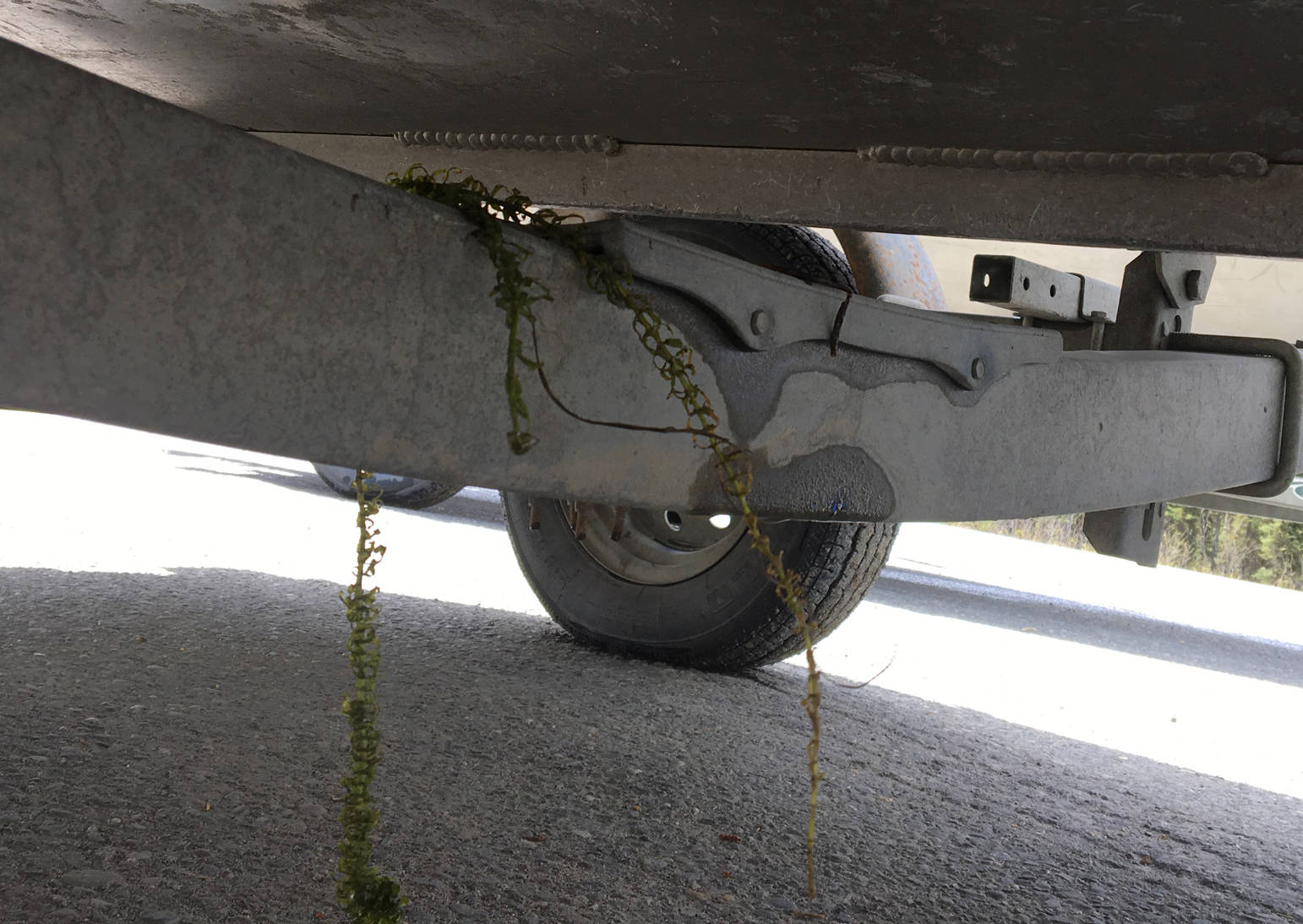So here’s a riddle. What’s green, likes water but travels by airplane, is freely passed around but is actually quarantined in Alaska, and has the potential to cost the commercial sockeye fishing industry almost half a billion dollars per year?
The answer is “Elodea,” the first freshwater invasive plant to become established in Alaska. The Alaska Division of Agriculture did indeed quarantine two Elodea species and three other aquatic plant species commonly used in the aquarium trade and classroom labs in 2014. The quarantine orders that “it is prohibited to import, transport, buy, sell, offer for sale, or distribute plants or plant parts of the regulated species within the state of Alaska. It is further prohibited to intentionally transplant wild plants and/or plant parts of these species within the state of Alaska.”
The problem is that the quarantine only addresses how Elodea was originally introduced into Alaska via aquariums. Now that there are established infestations, however, it is spreading to remote waterbodies by floatplane. Toby Schwoerer, with the University of Alaska’s Institute of Social and Economic Research, completed his doctoral dissertation this past spring on the bio-economic risks of Elodea spreading in Alaska. The likely scenario is that salmon habitat degradation due to Elodea consuming dissolved oxygen and providing cover for predatory fish (such as northern pike) will cost the sockeye industry almost $100 million annually. The worst case scenario modeled by Dr. Schwoerer suggests almost $500 million lost annually.
So the Kenai Peninsula Cooperative Weed Management Area (KP-CWMA) partnership has responded aggressively to local infestations of Elodea. It was first detected in Stormy Lake in September 2012 and subsequently found in two other Nikiski area lakes: Daniels and Beck. With great financial support from the Kenai Peninsula Borough and the U.S. Fish and Wildlife Service, KP-CWMA partners applied herbicides in 2014-15. The last Elodea to be found in any of those lakes was in September 2015!
This great outcome was soon tempered when Elodea was found in Sports Lake this past January. But KP-CWMA partners again rallied, hosting a public meeting on management options in April, petitioning for and receiving a permit exemption from the Alaska Department of Environmental Conservation, and applying herbicides in mid-May, two weeks after ice-out. The Alaska Department of Fish &Game (ADF&G) closed the public boat launch (except when monitored by staff) to minimize the likelihood that Elodea would be spread by boats and trailers using Sports Lake.
Last week we revisited Sports Lake to apply a bit more herbicide. Elodea has gone from occurring at 32 percent of sites surveyed in May to it now being detected as a couple of dying strands in only one deep hole. The boat launch is open again for public use with very little risk that Elodea will spread from Sports Lake to other local lakes. We fully expect Elodea to be eradicated completely from this lake by 2018.
The KP-CWMA partnership, composed of the Alaska Department of Natural Resources, Homer Soil &Water Conservation District, Kenai Watershed Forum, Cook Inlet Aquaculture, ADF&G, KPB, U.S. Fish and Wildlife Service and others, has done about as good and as fast a job as agencies can in responding to a true threat to our natural resources. Just this month, an article entitled “Rapid response for invasive waterweeds at the arctic invasion front: Assessment of collateral impacts from herbicide treatments” was published in the journal Biological Conservation that was authored by several biologists associated with the KP-CWMA.
But, again, our success to date is tempered by the knowledge that Elodea will almost certainly be re-introduced to the Kenai Peninsula from infestations elsewhere in Alaska. All known Elodea populations in the Anchorage area, including Lake Hood, have or are being treated. In the Mat-Su, however, treatments in Alexander Lake have been only partially successful, and Elodea was recently found in the nearby Sucker Lake complex. In Fairbanks, herbicides were applied last month in Chena Slough, but infestations now occur downstream in Chena River and the Totchaket Slough on the Nenana River. In Cordova, herbicides have been applied experimentally, but more serious management has yet to begin there.
We continue to survey and re-survey lakes here on the Kenai Peninsula, fully expecting to find Elodea again. At the Kenai National Wildlife Refuge, I continue to get calls from concerned citizens who are lending their eyes to this search. If you think that Elodea is growing in your lake, please take a photo of the plant (in your hand, not in the water) and contact the Refuge or any of the other KP-CWMA partners. We really do need all eyes on deck to keep Elodea from re-establishing on the peninsula.
Dr. John Morton is the supervisory biologist at Kenai National Wildlife Refuge. Find more information about the Refuge at http://www.fws.gov/refuge/kenai/ or http://www.facebook.com/kenainationalwildliferefuge.

